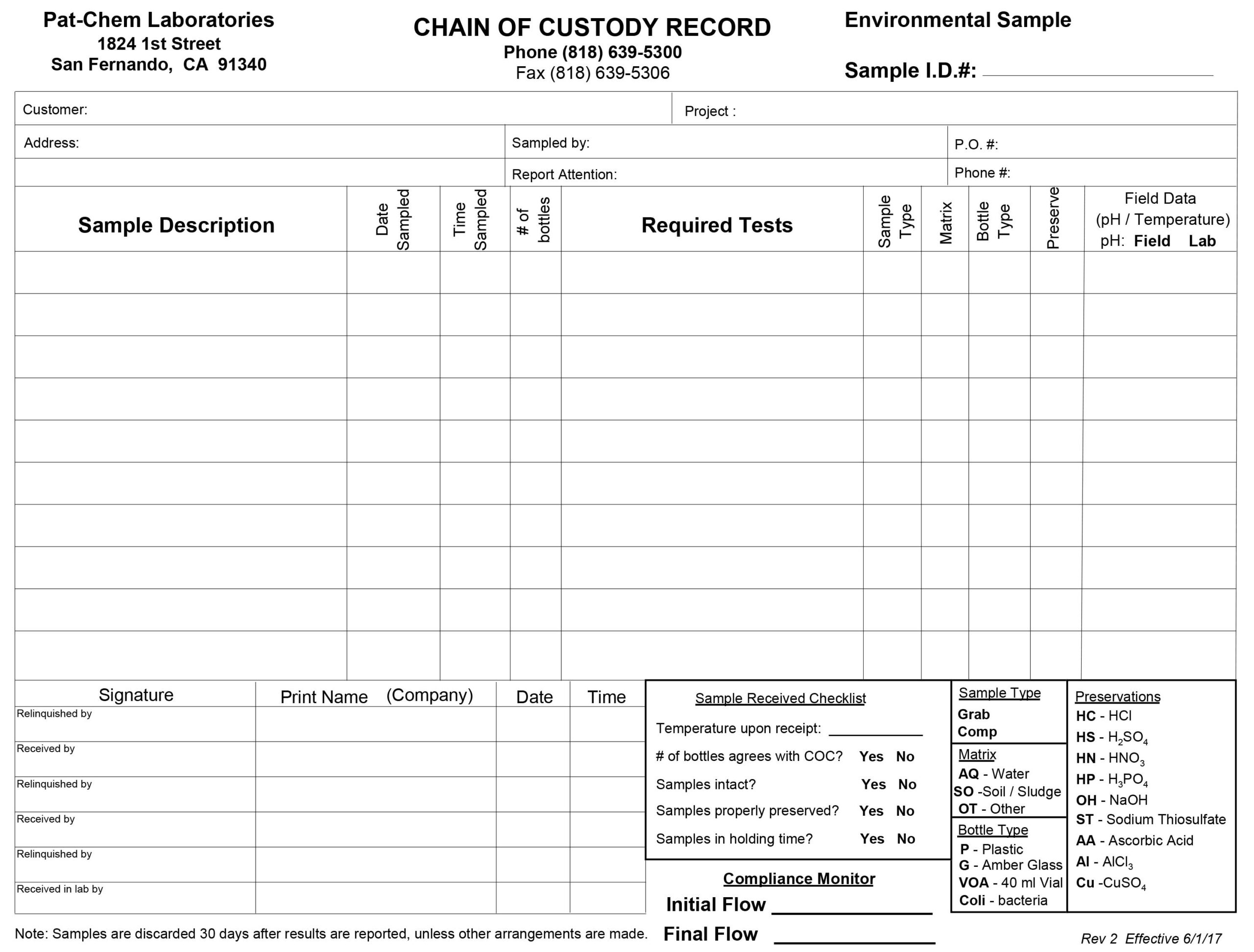What Is The Purpose Of Chain Of Custody

The chain of custody (CoC) is a critical concept in various industries, especially within the legal, forensic, and supply chain management realms. It ensures the proper handling, documentation, and preservation of evidence, materials, or products as they move through different stages of a process, from acquisition to final disposition. In today's complex global operations, maintaining an unbroken chain of custody is essential for verifying the authenticity, integrity, and reliability of items, especially when they could be crucial in legal proceedings or subject to strict regulatory compliance.
This comprehensive guide aims to delve into the purpose, intricacies, and real-world applications of the chain of custody, offering insights into its critical role in ensuring integrity, compliance, and trust in diverse operational contexts.
Understanding the Chain of Custody

The chain of custody can be defined as a chronological documentation of the acquisition, control, transfer, analysis, and disposition of physical or electronic evidence and other items of interest. It is a legal concept that ensures the integrity and admissibility of evidence in legal proceedings, where the continuous and secure custody of evidence is vital to establish its authenticity and reliability.
In practical terms, the CoC process involves the meticulous recording and tracking of every person who handles the evidence or item, the date and time of handling, the actions performed, and the location of the item at each stage. This comprehensive record-keeping ensures that the evidence remains unaltered, uncontaminated, and securely stored throughout its journey, thus maintaining its evidentiary value.
Key Elements of Chain of Custody
- Documentation: A comprehensive record of all activities and individuals involved with the evidence is maintained, including dates, times, and locations.
- Secure Handling: Proper protocols ensure the evidence is handled securely to prevent contamination, loss, or unauthorized access.
- Chain Integrity: The CoC must remain unbroken, meaning there should be no gaps or unauthorized interruptions in the custody of the evidence.
- Chain of Responsibility: Each person handling the evidence has a clear role and is accountable for its secure custody and accurate documentation.
- Chain of Communication: Effective communication ensures all stakeholders are aware of the evidence’s status and any changes in its custody.
The Importance of Chain of Custody

The chain of custody is vital for several reasons, primarily ensuring the integrity and authenticity of evidence or materials. In legal contexts, an unbroken CoC can be the difference between admissible and inadmissible evidence, significantly impacting the outcome of a case.
Moreover, in industries like healthcare, pharmaceuticals, and food production, the chain of custody is essential for maintaining product safety and quality. It ensures that products are handled and stored correctly, reducing the risk of contamination, spoilage, or other quality issues. In these industries, an unbroken CoC can also help trace products back to their source in the event of a recall or contamination issue.
Applications Across Industries
- Forensics and Law Enforcement: CoC is critical for the collection, storage, and transportation of physical evidence in criminal investigations, ensuring its admissibility in court.
- Healthcare and Pharmaceuticals: Maintaining an unbroken CoC is vital for patient safety and drug efficacy. It ensures that medications are stored and handled correctly, reducing the risk of adverse events.
- Food Safety: In the food industry, CoC helps trace products back to their origin, enabling quick and effective responses to foodborne illness outbreaks or contamination issues.
- Environmental Sampling: For environmental studies and regulatory compliance, an unbroken CoC ensures the integrity of samples, especially for legal proceedings or disputes.
- Art and Antiques: The CoC concept is applied to ensure the authenticity and provenance of valuable artworks and antiques, which is crucial for their market value and legal ownership.
Challenges and Best Practices
While the chain of custody is a well-established concept, maintaining an unbroken CoC can be challenging, especially in complex global supply chains or dynamic forensic investigations. Common challenges include the potential for human error, the need for rigorous documentation, and the possibility of intentional tampering or contamination.
To overcome these challenges, several best practices have emerged:
- Standardized Protocols: Developing and adhering to clear, standardized protocols for evidence handling and documentation can reduce human error and ensure consistency.
- Training and Awareness: Regular training and awareness programs can ensure that all personnel understand the importance of CoC and their role in maintaining it.
- Secure Storage and Transportation: Investing in secure storage facilities and implementing robust transportation protocols can minimize the risk of unauthorized access or environmental damage.
- Digital Documentation: Utilizing digital systems for CoC documentation can enhance security, reduce the risk of data loss, and facilitate real-time tracking and monitoring.
- Chain of Custody Audits: Regular audits can help identify gaps or vulnerabilities in the CoC process, ensuring continuous improvement.
Future Trends and Innovations
As technology advances, the chain of custody is expected to become more sophisticated and secure. Blockchain technology, for instance, offers a decentralized and tamper-proof way to record and track CoC data, enhancing transparency and security.
Furthermore, the integration of Internet of Things (IoT) devices and sensors can provide real-time monitoring of evidence or product conditions, such as temperature, humidity, or shock, ensuring compliance with storage and transportation requirements.
These innovations, combined with advancements in digital documentation and data analytics, will likely enhance the efficiency and effectiveness of chain of custody management, further ensuring the integrity and reliability of evidence and products across various industries.
Conclusion

The chain of custody is a critical process that ensures the integrity, authenticity, and reliability of evidence and materials. Its application across diverse industries, from law enforcement to healthcare, highlights its versatility and importance. As global operations become more complex, maintaining an unbroken chain of custody will remain a cornerstone of trust, compliance, and legal admissibility.
By understanding the purpose and best practices of chain of custody, organizations can ensure the secure handling and documentation of their evidence and products, thereby safeguarding their operations, maintaining public trust, and ensuring compliance with legal and regulatory standards.
How does the chain of custody impact legal proceedings?
+The chain of custody is crucial in legal proceedings as it ensures the integrity and admissibility of evidence. An unbroken CoC demonstrates that evidence has been handled securely and appropriately, which is essential for establishing its authenticity and reliability in court.
What are the consequences of a broken chain of custody?
+A broken chain of custody can lead to the inadmissibility of evidence in court. It may also indicate potential tampering or contamination, which could have serious implications, especially in industries like healthcare and food production where product safety is paramount.
How can digital technologies enhance chain of custody management?
+Digital technologies, such as blockchain and IoT, can enhance CoC management by providing secure, tamper-proof records, real-time monitoring, and improved tracking capabilities. These technologies can help ensure the integrity of the chain of custody and streamline its management.



